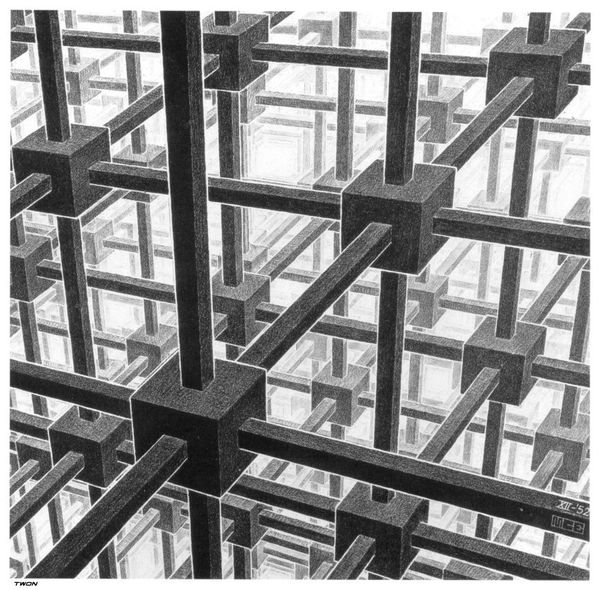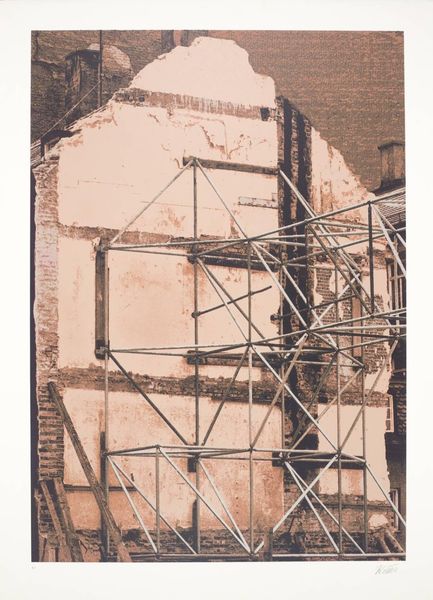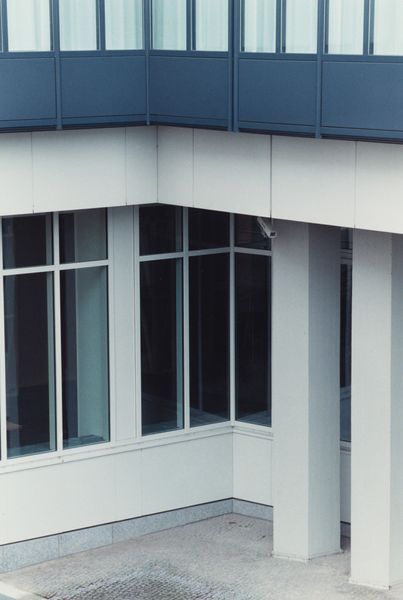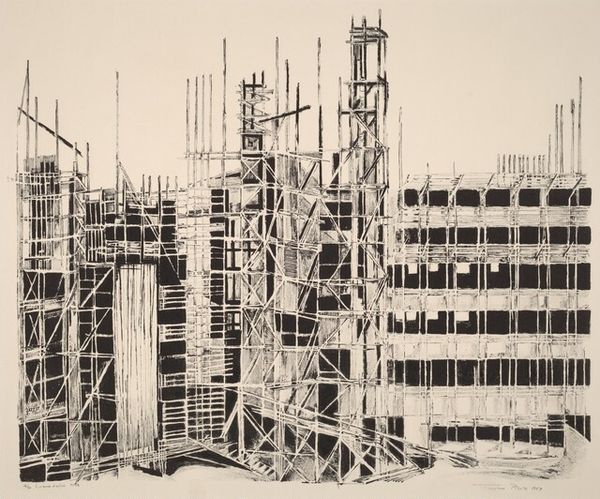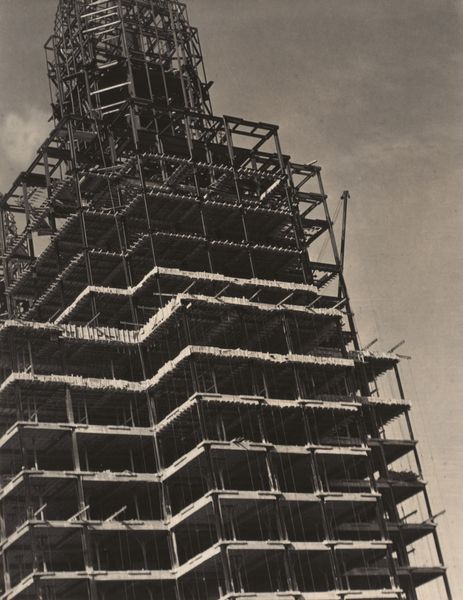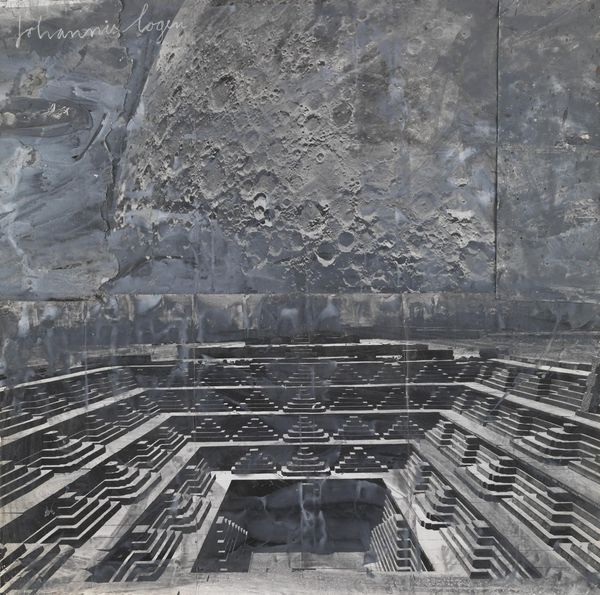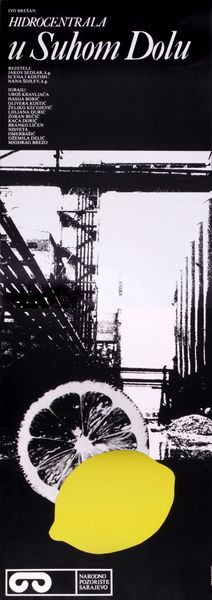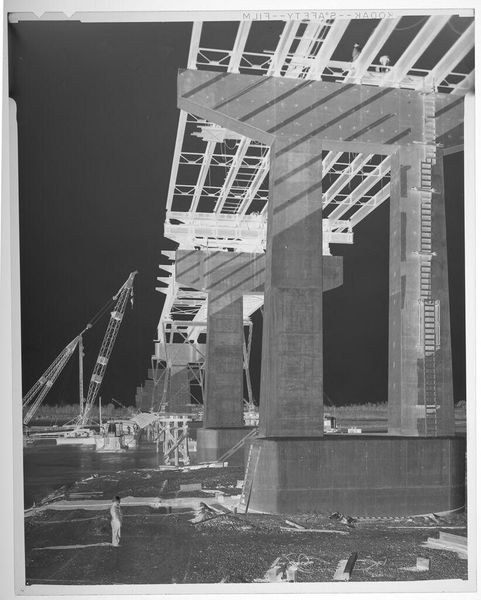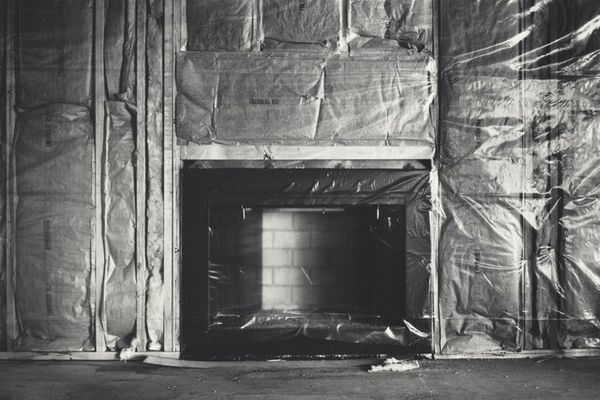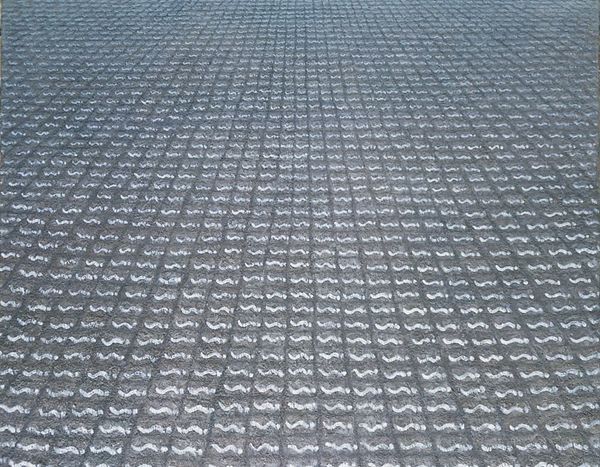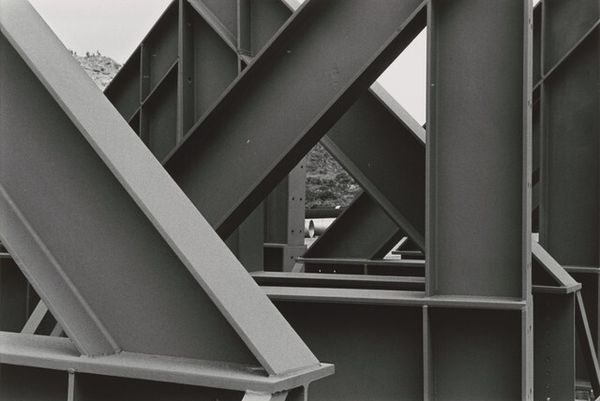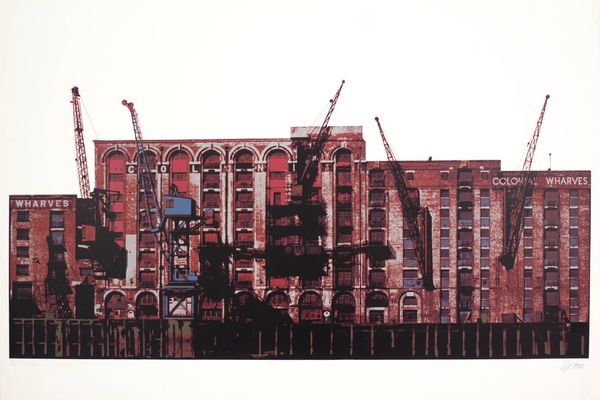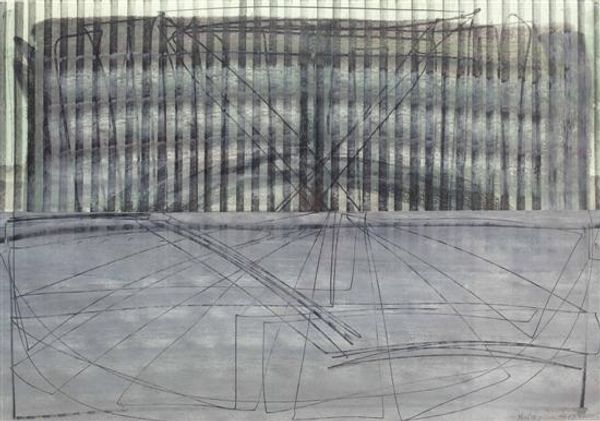
photography, site-specific, installation-art
#
contemporary
#
photography
#
site-specific
#
installation-art
#
cityscape
#
modernism
Dimensions: framed: 193.04 × 266.7 × 3.81 cm (76 × 105 × 1 1/2 in.)
Copyright: National Gallery of Art: CC0 1.0
Curator: Here we have Frank Thiel’s “Stadt 10/06A (Berlin),” taken in 2001. It’s part of his series exploring Berlin’s urban landscape, particularly during its reconstruction phase after reunification. What's your immediate take on it? Editor: It’s chaotic, but in a very organized way. I'm struck by the density of the scaffolding; it's almost a woven textile obscuring what lies beneath. All that metal, all that labor implied... Curator: That’s a great observation. Thiel often focuses on these transitional spaces. Berlin was undergoing massive architectural and social shifts, and this image captures that sense of a city in flux. The scaffolding becomes a symbol of that transformation. Editor: Absolutely. You see all that material and labor – steel, wood, human effort – temporarily obscuring the new construction that aims to signify something about the city's aspirations, perhaps power, permanence. I wonder about the social cost of this "progress". Curator: And that's where Thiel's work becomes so poignant. He presents the unvarnished truth of urban development. Not just the gleaming end result, but the messy, often disruptive, process. Think about the politics of that image, presented during this post-reunification moment of intense optimism. Editor: It's clever, too, isn't it? Using photography, a medium that suggests immediacy and truth, to highlight a deliberately constructed environment. Look how the composition frames sections of concrete as negative space among the metallic network, like fragments of a future that is becoming. Curator: The use of a large-format camera emphasizes the detail, making the viewer really confront the scale of the project and the immense amount of construction material involved. It moves past simply documenting a site to engaging with the politics of space. It shows that the act of image-making in the city always has consequences. Editor: I’m especially drawn to the fact that the installation is site-specific, playing with ideas of modernism by making labor visible through the temporary materials used for creation and building of architecture and a new sense of modern living and construction after post-reunification. Curator: Looking at it from a social viewpoint it seems very political because you are aware of this site with many social and architectural upheavals. He really highlights this with these industrial aspects, but also makes it relatable. Editor: It's a complex image, one that pulls apart the layers of the built environment to reveal the social and material processes involved. It challenges you to examine our cities in more than just aesthetic terms.
Comments
No comments
Be the first to comment and join the conversation on the ultimate creative platform.
